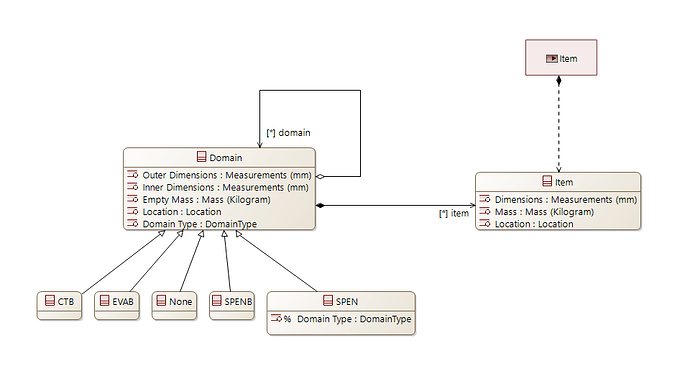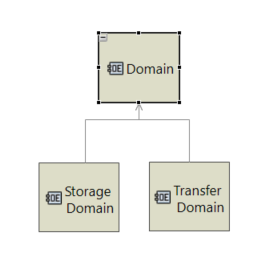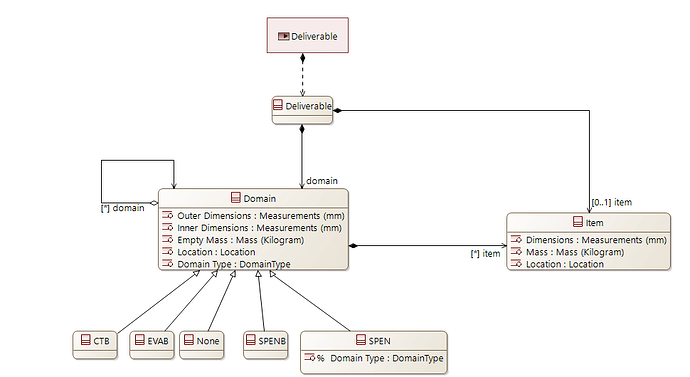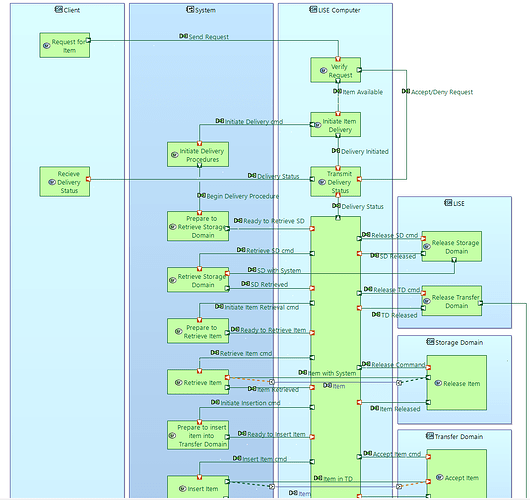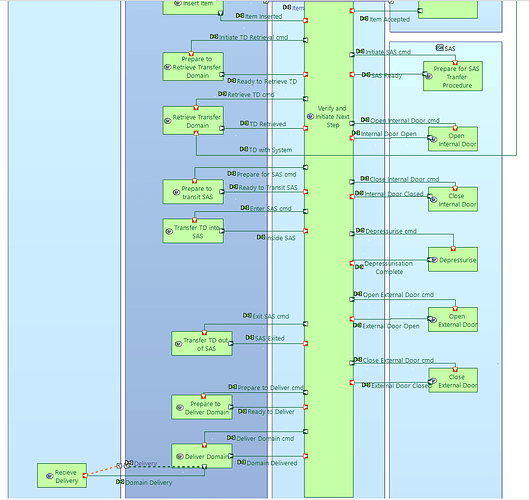Hello,
I am modeling a system that is part of a warehouse on the moon. It’s purpose is to pick up an item from inside the warehouse, pass it through the airlock, and deliver it to an astronaut or rover outside.
The item is stored in a box, it might be delivered in the same box or it might be moved into another box that can protect it from the Lunar Environment.
I am currently at the System Analysis level.
I had a problem showcasing the physical flow of the item, it being inside the box, the box being picked up by the system, the item then being moved to another box, and then that box being taken through the Airlock.
Another user had a similar problem in this post: Object flows in Arcadia
@Thierry_Poupon gave an answer statting that this can be done using EI’s and having State and Mode Machines of the EI’s
I have some follow-up questions:
Box = Domain in this diagram,
I have used the above diagram to showcase that an Item is in the Domain, if you notice there is a Domain that can be “None” which means it’s just the item by itself.
- How do I create an MSM diagram for an EI or Class, I only have the option to create it for an Actor
- I have “Domain” as an actor, where can I show the class is the actor
- Now, I can showcase the movement of the Item using the EI, but I am not sure how to showcase the movement of the Box with the item inside it. I could have an EI “Domain” , but there is no feature for me to showcase a Nested EI or Nested Component Exchange.
- In the above the Item is being passed from Domain to system, or the Domain is being passed from the warehouse to the system when it picks it up. How do I showcase the movement through the airlock, I want to show that the system is inside the airlock holding the box with the item in it.
(Note, there is the possibility of a single robot moving through the airlock, or even multiple robots that pass the item from outside the airlock to a robot inside the airlock, all these robots are still part of the SOI )
Thank you for taking the time to read this
